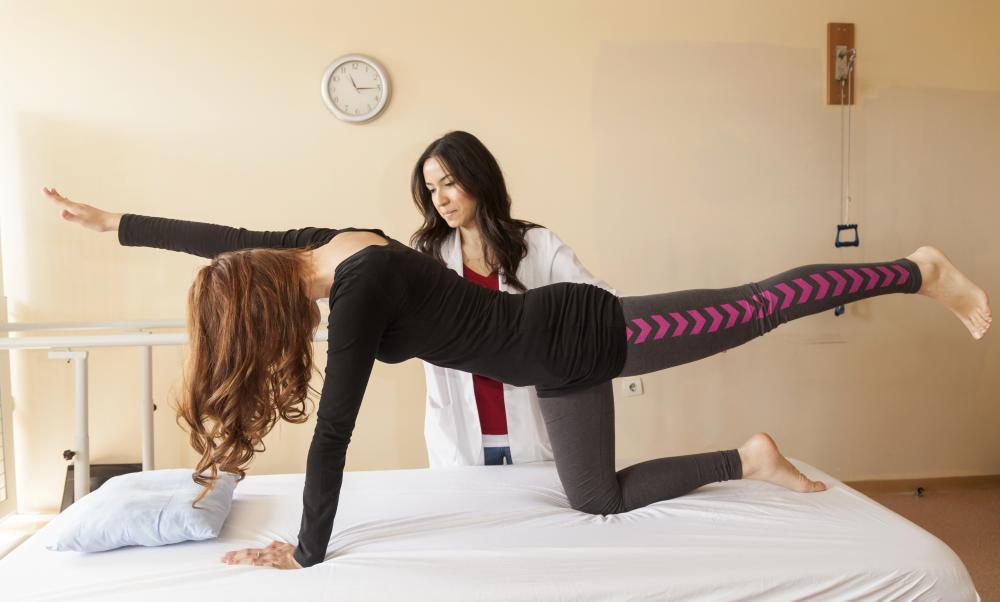At WiseGEEK, we're committed to delivering accurate, trustworthy information. Our expert-authored content is rigorously fact-checked and sourced from credible authorities. Discover how we uphold the highest standards in providing you with reliable knowledge.
What Are the Different Types of Physical Therapy Required Courses?
Physical therapists — informally referred to as PT's — are healthcare professionals who evaluate, plan appropriate treatment modalities and administer such treatment to patients who experience mobility issues secondary to disease, injury or disability. PT's are prepared to practice with an undergraduate bachelor's degree followed by graduate school to specifically study a physical therapy curriculum. Following graduation from an accredited school, physical therapy students must pass a national test to be licensed by examination. Physical therapists are employed in a wide variety of settings, including hospitals, rehabilitation centers, clinics, nursing homes, university athletic departments and home health care agencies. Physical therapy required courses must therefore take into account all these possible areas of practice and include classes that cover normal functional anatomy and physiology, diagnosis and treatment of injury and multiple clinical internships.
Although the majority of physical therapy students have studied human anatomy and physiology as undergraduates, graduate school physical therapy required courses include more in-depth classes such as human anatomy, surface anatomy, human pathology and kinesiology. The tenets of the healthcare discipline itself are established with courses such as Introduction to Physical Therapy Practice and a yearlong study that involves Principles of Physical Therapy I and Principles of Physical Therapy II. Other normative physical therapy required courses include courses in neuroscience, health promotion classes and a year of classes that involve management and administration of a physical therapy department. Pediatric physical therapy and Principles of Motor Control are also physical therapy required courses.

Pathology-based physical therapy required courses make up a large component of a student's schedule. Pathomechanics — the study of abnormal body mechanics secondary to injury — is studied, often in conjunction with normal body movement, or kinesiology. Applied Clinical Medicine courses refer to those that study the application of rehabilitation and health principles to pathology or dysfunction. Integumentary-related classes, pain management courses, instruction on pharmacology and classes in radiology — or reading x-rays — are also completed. In addition, physical therapy students are trained in the use of orthotics and prosthetics.

Physical therapy required courses include a significant number of clinical hours beginning very early in the program. These courses may be partially completed with clinical research classes and courses known as service learning, but the vast majority of clinical hours take place in physical therapy departments and on the sidelines of athletic events. Here, under the supervision of a licensed physical therapist or physical therapy staff member, students are allowed to practice and refine their skills.
AS FEATURED ON:
AS FEATURED ON:

















Discuss this Article
Post your comments